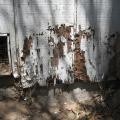Do You Need A Full Restoration Service for Your Antiques?
Assessing the condition of your antiques is the first step in deciding on restoration. Thoroughly examine each piece for signs of wear, damage, or deterioration, considering their impact on functionality, aesthetics, and structural integrity. Consulting experienced professionals can provide invaluable insights into the best preservation methods for your antiques.
The restoration process itself involves a series of meticulous steps, from assessment and documentation to final inspection and documentation. Each phase, including disassembly, cleaning, repair, refinishing, and reassembly, is carefully executed to ensure the preservation and enhancement of the antique's historical and aesthetic value.
As an antiques specialist, we at Westland London know that preserving the historical and monetary value of antiques is paramount. In this article, we’ve outlined all the aspects of the restoration process to help you make an informed decision about whether you need to do it.
Assess the Condition of Your Antiques
Assessing the condition of your antiques is crucial before deciding on restoration. Begin by thoroughly examining each piece for signs of wear, damage, or deterioration.
Look for structural issues like cracks, loose joints, or missing parts. Surface damage such as scratches, chips, or discoloration should also be noted. Assess the severity of these issues and consider whether they affect the functionality, aesthetics, or structural integrity of the item.
Minor wear and tear may only require simple repairs or cosmetic touch-ups, while more significant damage may necessitate extensive restoration work. Consult with experienced professionals to accurately evaluate the condition of your antiques and determine the best course of action for preservation.
A Breakdown of the Restoration Process
A full restoration service for antiques involves several meticulous steps to ensure the preservation and enhancement of the piece's historical and aesthetic value. Here's a breakdown of the restoration process:
1. Assessment and Documentation
The restoration process typically begins with a comprehensive assessment of the antique's condition. This includes documenting existing damage, identifying original materials and construction techniques, and understanding the piece's historical context.
2. Disassembly
In many cases, antiques need to be disassembled to access interior components or to facilitate thorough cleaning and repair. Disassembly requires careful attention to detail to avoid causing further damage to delicate components.
3. Cleaning
Cleaning is a crucial step in the restoration process to remove dirt, grime, and surface contaminants accumulated over years of use and storage. Different cleaning methods may be employed depending on the materials and finishes of the antique, ensuring gentle yet effective removal of dirt without causing harm.
4. Repair
Repairing damaged or deteriorated components is a key aspect of antique restoration. This may involve replacing missing parts, repairing cracks or breaks, reinforcing weakened joints, or addressing structural issues. Skilled craftsmen use traditional techniques and materials to maintain authenticity while ensuring the structural integrity of the piece.
5. Refinishing
Refinishing aims to restore the original appearance of the antique by addressing surface imperfections and enhancing its overall aesthetic appeal. This may involve stripping old finishes, applying new finishes, or restoring decorative elements such as veneers, inlays, or gilding. Careful attention is paid to preserving the patina and character of the piece while achieving a visually pleasing result.
6. Reassembly and Reassembly
Once cleaning, repair, and refinishing are complete, the antique is carefully reassembled, ensuring all components fit together securely. This may involve reattaching hardware, reassembling drawers or doors, and reinstalling decorative elements.
7. Final Inspection and Documentation
Before the restoration process is considered complete, the antique undergoes a final inspection to ensure that all work has been carried out to the highest standards. Documentation of the restoration process, including before and after photographs, may be provided to the owner for their records.
Evaluate the Historical Significance
When evaluating whether to proceed with a full restoration service for an antique, it's crucial to assess its historical significance. Every antique carries a unique story, and alterations made during restoration can affect its authenticity and value.
For rare or historically significant items, restoration decisions must be made with extra care. Alterations that deviate from the original design or compromise historical integrity can diminish the piece's value and significance. Conversely, a well-executed restoration that preserves the original character and craftsmanship can enhance its value and appeal to collectors and enthusiasts.
Consider consulting with experts or conducting research to understand the historical context of the antique and its importance within the broader historical and cultural landscape. This insight will guide restoration decisions and ensure that the integrity of the piece is respected.
Factors Influencing Restoration Decisions
Several factors come into play when deciding whether to proceed with a full restoration service for an antique, each influencing the final decision.
Firstly, the intended use of the piece plays a significant role. If the antique is purely decorative and won't undergo much handling, minor repairs or cosmetic touch-ups may suffice. However, if the piece is intended for everyday use or display in a prominent setting, a more comprehensive restoration might be necessary to ensure its longevity and aesthetic appeal.
Budget constraints are another crucial factor to consider. Full restoration services can be costly, especially for intricate or severely damaged pieces. Owners must weigh the cost of restoration against the value and sentimental significance of the antique to determine if it's a worthwhile investment.
Personal preferences also play a role in restoration decisions. Some owners may prefer to maintain an antique's original patina and imperfections, viewing them as part of its charm and history. Others may prioritize achieving a pristine appearance, opting for extensive restoration to erase signs of wear and damage.
Balancing practical concerns with preserving the integrity of the antique is essential. While restoration can address structural issues and enhance the overall appearance of an antique, overzealous or unnecessary restoration can detract from its authenticity and character. It's crucial to work with experienced professionals who understand the delicate balance between preservation and restoration and can advise on the best course of action.
Alternatives to Full Restoration
When faced with minor issues or the desire to update the appearance of an antique piece without undergoing a full restoration, there are alternative solutions to consider.
One option is cleaning and polishing, which can remove surface dirt and grime, revealing the natural beauty of the piece without altering its original condition. This approach is relatively low-cost and minimally invasive, making it suitable for maintaining the integrity of the antique while enhancing its appearance.
Selective repairs are another alternative, focusing on addressing specific areas of damage or wear without undertaking a comprehensive restoration. This targeted approach allows owners to preserve the antique's authenticity while ensuring its structural stability and functionality.
Conclusion
In conclusion, deciding whether to pursue a full restoration service for antique items involves careful consideration of factors such as the item's condition, historical significance, intended use, and personal preferences. It's crucial for antique owners to consult with experienced professionals to assess the best course of action and ensure the preservation of the item's value and beauty. By weighing these factors thoughtfully, owners can make informed decisions that honor the history and craftsmanship of their prized possessions while maintaining their integrity for generations to come.
More to Read:
Previous Posts:








